Diploma program on Multiple intelligences in Classroom and Blooms taxonomy is an exclusive training program launched by School of Educators for preparing experts on the use of multiple intelligences and blooms taxonomy in schools.
ABOUT MI
The theory of multiple intelligences was proposed by Howard Gardner in 1983 to more accurately define the concept of intelligence and to address the question whether methods which claim to measure intelligence (or aspects thereof) are truly scientific.
Gardner’s theory argues that intelligence, particularly as it is traditionally defined, does not sufficiently encompass the wide variety of abilities humans display. In his conception, a child who masters multiplication easily is not necessarily more intelligent overall than a child who struggles to do so. The second child may be stronger in another kind of intelligence and therefore 1) may best learn the given material through a different approach, 2) may excel in a field outside of mathematics, or 3) may even be looking at the multiplication process at a fundamentally deeper level, which can result in a seeming slowness that hides a mathematical intelligence that is potentially higher than that of a child who easily memorizes the multiplication table.
The Eight Intelligences :
1) Verbal-Linguistic
– The Writer/Speaker Children with strong Verbal-Linguistic intelligence will have a propensity to produce language and sensitivity to the nuances, order and rhythm of words. These students love to read, write and tell stories. They have good memories for names, places, dates and trivia. Professionals with strong VL intelligence will be writers, public speakers, teachers, and actors. Some historical examples include Abraham Lincoln, T.S. Elliot and Charlton Heston.
2) Math-Logical – The Scientist
Children with strong Math-Logical intelligence have the ability to reason deductively and can recognize and manipulate abstract patterns or relationships. Students who have strong problem-solving and reasoning skills will excel in this intelligence. Adults with this intelligence will work as scientists, mathematicians, computer programmers, lawyers or accountants. Some historical examples include Albert Einstein, Nicolae Tesla, Alexander Graham Bell.
3) Spatial – The Builder
Children with Spatial intelligence have the ability to create visual-spatial representations and can transfer them mentally or concretely. Students who exhibit this intelligence need a mental or physical “picture” to understand the information being presented. Professionals in this intelligence are typically graphic artists, architects, cartographers and sculptors. Some historical examples include Frank Lloyd Wright, Pablo Picasso, and Bobby Fischer.
4) Musical – The Composer
Children with strong Musical intelligence have great sensitivity to the rhythm of sounds (e.g. pitch, timbre, composition). Students strong in this intelligence will enjoy listening to music and may ultimately work as singers, songwriters, composers, or even music teachers. Some historical examples include Ludwig van Beethoven, J.S. Bach, and Mozart.
5) Bodily-Kinesthetic – The Athlete
Children with strong Bodily-Kinesthetic intelligence gravitate towards athletics; however, they also may use their bodies to solve problems, or convey ideas and emotions. Students with BK intelligence will be good at physical activities, have good hand-eye coordination and may have a tendency to move around a lot while expressing themselves. Professionals using BK intelligence will include athletes, surgeons, dancers and even inventors. Some historical examples include Michael Jordan, Tiger Woods, and Andre Agassi.
6) Interpersonal – The Peacemaker
Children with strong Interpersonal intelligence work effectively in a group and understand and recognize the goals, motivations and intentions of others. Students with this intelligence thrive in cooperative, group work situations and are skilled at communicating, mediating and negotiating. Professionals in this intelligence may be teachers, therapists, and salespeople. Some historical examples include Mohandas Gandhi, Mother Theresa and Ronald Reagan.
7) Intrapersonal – The Philosopher
Children who are strong in the Intrapersonal intelligence have the ability to understand one’s own emotions, goals and motivations. These students have good instincts about their strengths and abilities. This intelligence will be highly developed in professionals who work as philosophers, psychiatrists or religious leaders. Some historical examples include Eleanor Roosevelt and Sigmund Freud.
8.) Naturalist – The Earth Lover
Children with strong focus in this intelligence will exhibit an affinity for all things nature. These students will enjoy and thrive when learning about nature topics, such as flora and fauna. Some professions with focus on this intelligence will include forest rangers, botanists, farmers and biologists. Some historical examples include Charles Darwin, John Muir.
ABOUT BT
In 1956, Benjamin Bloom headed a group of educational psychologists who developed a classification of levels of intellectual behavior important in learning. Bloom found that over 95 % of the test questions students encounter require them to think only at the lowest possible level…the recall of information.Bloom identified six levels within the cognitive domain, from the simple recall or recognition of facts, as the lowest level, through increasingly more complex and abstract mental levels, to the highest order which is classified as evaluation.
Six levels of Blooms :
- Remembering / Knowledge or recall of data, expresses the natural urge to recall previously learned material. So knowledge, or being told, can be a foundation for very much learning. It provides a basis for higher levels of thinking, but is rote in nature. Insight rides on top of it.
- Understanding / Comprehension, the ability to grasp meaning, explain, restate ideas, means understanding the basic information and translating, interpreting, and extrapolating it.
- Application, or using learned material in new situations, involves using information, ideas, and skills to solve problems, then selecting and applying them appropriately.
- Analysis suggests separating items, or separate material into component parts and show relationships between parts. It also means breaking apart information and ideas into their component parts.
- Creating / Synthesis suggests the ability to put together separate ideas to form new wholes of a fabric, or establish new relationships. Synthesis involves putting together ideas and knowledge in a new and unique form. This is where innovations truly take place.
- Evaluation is the highest level in this arrangement. Here the ability to judge the worth of material against stated criteria will show itself. Evaluation involves reviewing and asserting evidence, facts, and ideas, then making appropriate statements and judegments.
COURSE CONTENTS
MODULE 1 : MULTIPLE INTELLIGENCES
Chapter 1: Introduction to multiple intelligences theory.
Chapter 2: Description of multiple intelligences.
Chapter 3: Application of multiple intelligences in classrooms.
Chapter 4: Reflection on multiple intelligences.
Annexure I : Multiple intelligence test.
Annexure II: Checklist for assessing students’ multiple intelligences.
TABLES
Comparison of Traditional View of Intelligence and Multiple Intelligences.
Summary of the Eight Intelligence.
Multiple Intelligences: Classroom Application.
FIGURES
Eight Intelligences and Meaning.
The Engaging Wheel (Seven Intelligences, 1983).
Eighth Intelligence (added in 1999).
Applying the Engaging Wheel.
MODULE 2 : BLOOM’S TAXONOMY IN CLASSROOM
Chapter 1 Understanding bloom’s taxonomy.
Chapter 2 Classroom application of bloom’s taxonomy.
Chapter 3 Thinking tools for classroom application of bloom’s taxonomy.
Chapter 4 Bloom’s taxonomy and rubrics.
Tables and figures
• Category, Examples and Key Words for Cognitive Domain.
• Category, Examples and Key Words for Affective Domain.
• Categories, Examples and Key Words for Psychomotor Domain.
• Revised Bloom’s Taxonomy Table Matrix.
• Thinking Tool Kit.
• Using Bloom’s Taxonomy to Write Rubrics.
• Model of Cognitive Domain.
• Model of Affective Domain.
• Model of Psychomotor Domain.
• Models of Older and New Version of Blooms Taxonomy.
• Combination of Original and Revised Bloom’s Taxonomy.
• Building Applying and Transferring (BAT) Learning Model.
• 5-Step Model to Move Students toward Critical Thinking.
• Teaching Wheel.
• Select Activity Wheel.
APPENDIX 1: Levels of Learners’ Knowledge, Key Words and Questions.
APPENDIX 2: Rubrics for Story Writing.
APPENDIX 3: Science Project Development Rubric.
APPENDIX 4: Short Response Rubric.
MODULE 3 : INTEGRATION OF MULTIPLE INTELLIGENCES AND BLOOM’S TAXONOMY
Unit 1: Understanding differentiated instruction, integrated curriculum and authentic assessment.
Unit 2: Integrating multiple intelligences and bloom’s taxonomy.
Unit 3: Integrated grid matrix.
ANNEXURE 1- Grid Matrix: Samples.
ANNEXURE 2- Sample Rubrics.
ANNEXURE 3- Checklists.
ANNEXURE 4- MI TEST and SMART Class Record Sheet.
ANNEXURE 5- Example Of Smart Activities.
FIGURES
Figure 1.1 Model of Integrated Curriculum: An Example.
Figure 2.1 Demonstration: Understanding of Volcanoes through Different MIs.
Figure 2.2 Benefits of MI, RBT, and Integrated MI/RBT.
MODULE 4: TECHNOLOGY INTEGRATION WITH MULTIPLE INTELLIGENCES AND BLOOM’S TAXONOMY
Unit 1: introduction.
Unit 2: multiple intelligences and technology.
Unit 3: software applications for enhancing multiple intelligences.
Unit 4: bloom’s digital taxonomy.
ANNEXURE 1: Examples of technology integration.
ANNEXURE 2: Software applications- games, simualtors and animations.
ANNEXURE 3: Integrating technology with multiple intelligences: sample lesson plans.
MODULE 5: MULTIPLE INTELLIGENCES BASED ASSESSMENT
Unit 1: Multiple intelligences and assessment.
Unit 2: Authentic assessment approach to multiple intelligences.
Unit 3: Assessment methods for differently smart students.
Unit 4: Multiple intelligences and portfolio assessment.
ANNEXURE 1: Multiple Intelligence Based Assessment Sheets and Project Ideas.
ANNEXURE 2: General Criteria for Evaluating the Portfolio Structure.
ANNEXURE 3:Rating Scale for Portfolio Assessment.
ANNEXURE 4: Multiple Intelligence Lesson Plan Guide.
ANNEXURE 5: Presentation Assessment Ideas.
ANNEXURE 6 : Learning Centres for Multiple Intelligence’s.
MODULE 6: MULTIPLE INTELLIGENCES AND BLOOM’S TAXONOMY (RESOURCE GUIDE)
RESOURCES FOR MULTIPLE INTELLIGENCES
Eight Intelligences Illustration Chart
Eight Intelligences Summary Chart
The Engaging Wheel for Multiple Intelligences
Apply the Engaging Wheel
Multiple Intelligence Teacher-centred and Child-centred Activity Table
MI Project Ideas Chart for Teachers
MI Unit Planning Template
MI Project Planning Template
MI Lesson Template
Career Booklet for Multiple Intelligences
Learning Pronunciation through Multiple Intelligences Activities
Multiple Intelligences Test (MIT)
Multiple Intelligence Quiz
Curriculum Differentiation Guide
RAFT (ROLE AUDIENCE FORMAT TOPIC): Writing Skill Tool
THINK-TAC-TOE Planning Tool
RESOURCES FOR THINKING SKILLS (BLOOM’S TAXONOMY)
Bloom’s Taxonomy: Activity
BAT Learning Wheel
The Select Activity Wheel
Thinking Tool Kit for SMART learning and High Order Thinking
Self-Assessment Rubric for Thinking Skills
Bloom’s Thinking Level Key Words and Question Chart
Advanced Learning Strategies Guidebook
Other Details :
Minimum Duration: 1 Year
Maximum Duration: 1 year 4 Months
Course Fee: Rs. 12,000
Minimum Age: No bar
Maximum Age: No bar
Eligibility:
Graduate
Programme Duration
The course for ‘Diploma in Multiple Intelligence in classroom and Blooms Taxonomy’ will be transacted in 1 Year ( 6 Modules to be covered)
Extension can be given upto the period of 4 months (Only in special cases)
Date of joining- You can join the course in any month
Programme Structure
Course Process
Students will have their personal tutors who will guide them through course material. Students can make use of e-mail to correspond with tutors and all students will have the facility to interact with the tutors through the discussion forum and chat facility on our website. The course has 6 modules that have to be covered within 6 month duration. You can join the distance learning course in any month and there will be no specific beginning of the academic year. The 6-month duration will be counted from the date you have joined the course.
Mode of Course
The distance course will have two mode depending on the suitability of the applicants:
Postal
Study materials ( CD / DVD ) will be couriered to you at your residential address. Personal tutors will be allotted to guide you through the course content. You can correspond with your tutor through email or chat facility at fixed intervals. Upon enrolling, you will be allotted a personal tutor, whom you may contact (through fax, or E-mail: mypersonaltutor@educatorstraining.in) when require any assistance.
Online
You can download the study material online from our website/email it to you. Personal tutors will be allotted for online mode too. You can correspond with your tutor through email or chat facility at fixed intervals. Upon enrolling, you will be allotted a personal tutor, whom you may contact (through fax +91-121-2621504, or E-mail: mypersonaltutor@educatorstraining.in) when require any assistance.
The course content, eligibility, criteria and evaluation method will remain same for both the postal and online course.
Evaluation
The course work will be assessed through Continuous and Comprehensive Evaluation and it will be based on different criteria and techniques. It would provide enough feedback and space for improvement. Scheme of Evaluation will involve assessment on the basis of Assignments and Test Papers.
At the end of each module, students will be required to submit an assignment that will be subsequently evaluated and graded. The assignments have to be submitted latest by the due dates. Once you have submitted your assignment, your work will be assessed and graded. Your grades will be sent to your tutor, who will have the responsibility of notifying you of your grades (through e-mail as well as post) along with his/her personal comments on your work. There will be six assignments-one each for 6 modules. Students can submit their assignments through e-mail. There will be two test papers at the end of the course. Once you have completed all six assignments and two test papers, you will be awarded your Diploma in Multiple Intelligence in classroom and Blooms Taxonomy that will reflect an average of all assignments grades and test grades. You will be given your overall grade. The Diploma in Multiple Intelligence in classroom and Blooms Taxonomy will be issued within one month after course completion to the students who will successfully complete the course and have a pass grade in both test papers.
Hands on Training
We also conduct workshops and provide professional exposures to students during the course session in order to impart them hands on training.



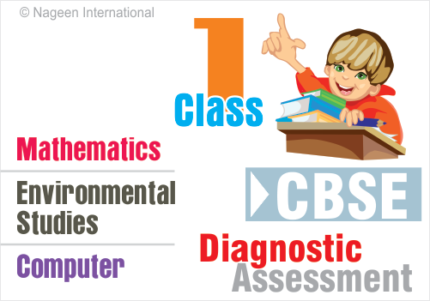

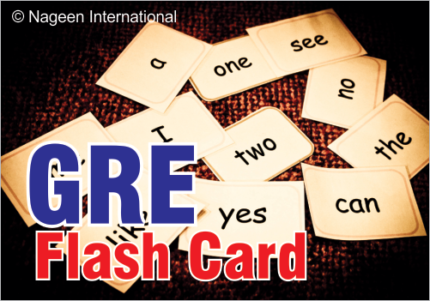

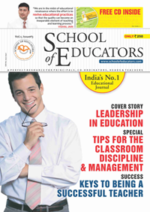
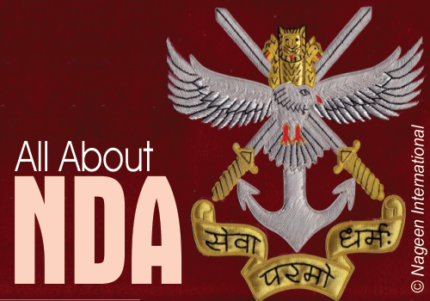


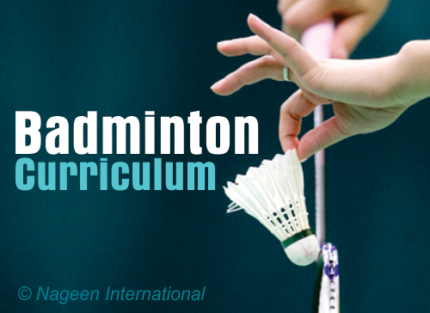
Parul Singh –
It is important for every school to have a teaching staff that is well trained on the use of multiple intelligences and blooms taxonomy as the overall performance of students is based on these two approaches of learning. The training program on MI and BT can also be called learning enhancement program. MI and BT training urges a rethinking of how teachers should approach subjects and topics for enhancing students’ learning. Being trained on the use of MI and BT, teachers can successfully prepare unit lessons, work effectively on low order as well as high order of thinking skills and planning different activities based on MI and BT. The training on MI and BT will prepare teachers to use grid matrix for planning curriculum and doing comprehensive assessment. It will expose them to a range of thinking tools such as X Y W chart, LDC, TAP, concept map, mind map, KWLH, PMI chart, SOWC, etc. Planning an effective curriculum is the prime responsibility of teachers and MI and BT help teachers in planning a curriculum that has the characteristics of quality, depth and rigour.
VISWANATH Sivaswamy –
Can you conduct this for our school exclusively in our campus
admin –
We can do a two day workshop in your campus. Diploma takes a longer time. We suggest some staff members of your team to do the diploma. They can further take on trainings in your school.